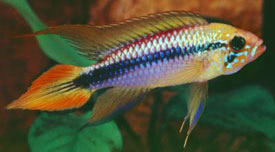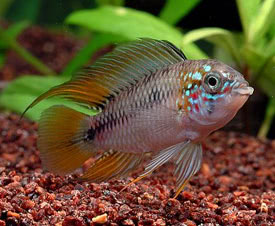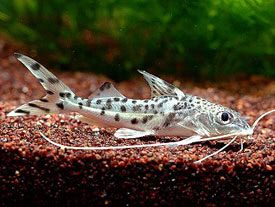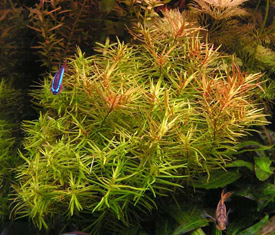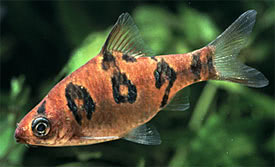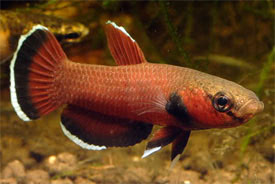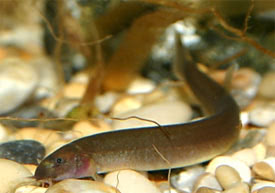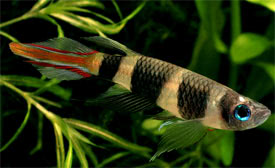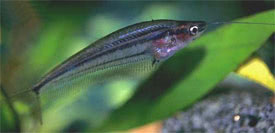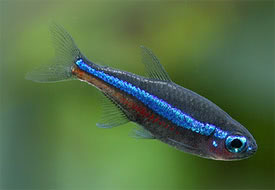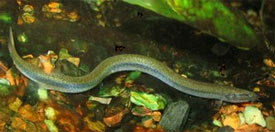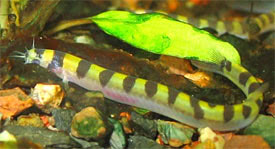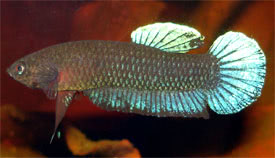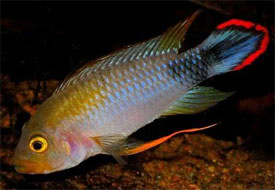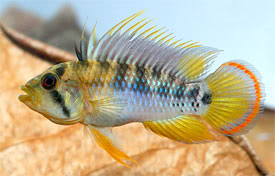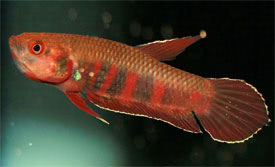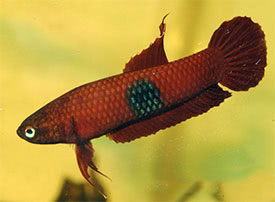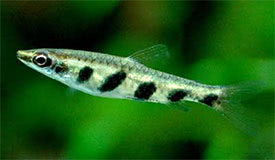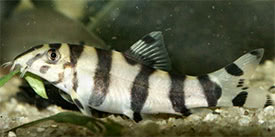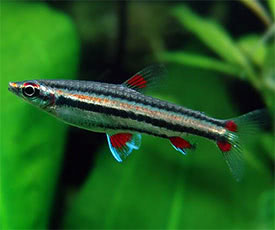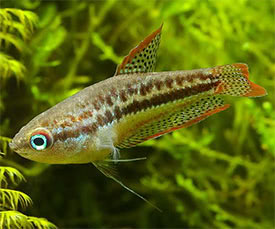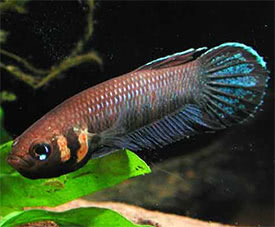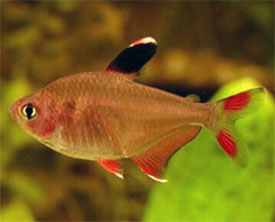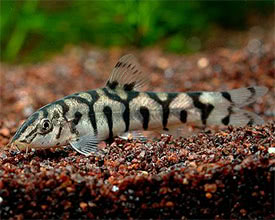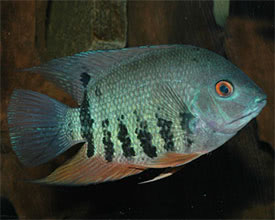
 Magyarul / Hungarian
Magyarul / Hungarian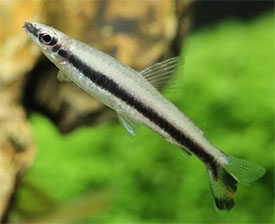
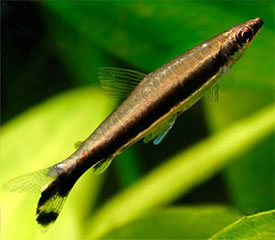

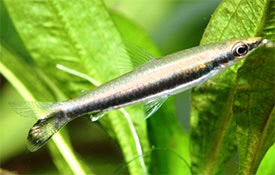
- Scientific name: Nannostomus unifasciatus
- Synonyms: Poecilobrycon ocellatus (Eigenmann, 1909)
- Common name: One-lined Pencilfish
- Group: Characins
- Habitat: South America; Found throughout much of the upper Amazon basin in Brazil, Bolivia, Colombia, Venezuela and Guyana. An introduced population exists in Trinidad and Tobago.
- Size: 3.5-4 cm
- Biotope: Inhabits slow-flowing blackwater rivers, and swamps, particularly with dense aquatic vegetation and with submerged woody structures and leaf litter. Often found in flooded forest areas.
- Social behavior: A very peaceful schooling fish, but because of its small size and shyness, it isn’t a good choice for a general community tank. Always keep them in large groups where any aggression is spread between individuals. They swim in the middle and top areas of the aquarium, so bottom-dweller tankmates would be a good choice.
- Diet: Omnivorous; Micropredator, feeding on tiny invertebrates in nature, but will eat dried foods in the aquarium, however it is important to feed them regularly with small live and frozen foods.
- Breeding: Unsuccessful in aquarium.
- Tank: Minimum 50 litres
- Population: 8-10 fish for 70 litres
- Decoration: They require a densely planted tank with dark substrate. Floating plants are useful addition to subdue the lighting, and also make the fish more sucure. The tank can be decorated with driftwood branches and dried leaf litter.
- Temperature: 23-28 °C
- pH: 4-7
- Hardness: 1-12 NK°
- Lifespan: 3-5 years
Description: One-lined Pencilfish is quite popular in the aquarium trade because of its small size, beautiful colors, unique swimming posture and relative hardiness. Its elongated body with the black horizontal stripe is resemble to the graphite core of a pencil. Under its pale to olive brown back a gold-colored stripe extends from the tip of the snout, through the eye and to the caudal fin. The belly area is white, the anal fin is black with a white tip, while the rest of the fins are trasparent. Often a small black, oval spot is located on the caudal fin. The name pencilfish, was first used in the 1920s, later to be applied to all the species of the genus Nannostomus. Nannostomus unifasciatus closely resembles Nannostomus eques, but the two can be easily told apart by the more defined dark lateral stripe and the absence of dark spots in the scales. Both species swim at an oblique angle, that unique among the pencilfishes. Interestingly Nannostomus unifasciatus have distinct daytime and nighttime color patterns. During darkness, the horizontal lines break up into a series of blotches extending from its back to its belly. This diurnal color pattern has been observed in blind specimens, showing it’s an automatic response that the fish cannot control.
Adult males are more intensely-colored, and are usually slimmer than females, and also possess an enlarged anal-fin. There are no reports of their successful breeding in captivity, however in 1950 there were two reports of their successful spawnings, but both of these were a misidentification of the species, and the spawnings having occurred for Nannostomus eques and Nannostomus harrisoni.






























